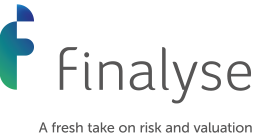New rules on legislative and non-legislative payment moratoria during COVID-19 crisis
Written by
Milenko Petkovic, Consultant
Introduction:
The global COVID-19 pandemic has forced governments all over the world to impose strict measures intended to defend their healthcare systems. These measures have had a significant adverse effect on many business and economic lives of private individuals, more specifically: liquidity issues and difficulty in due payments of financial obligations. In answer to the expected liquidity shortfall, Member States implemented a wide range of supportive (economic) measures, including certain forms of moratoria on payment of financial obligations, to address short-term operational and liquidity issues faced by business and private individuals.
“Moratorium” is a measure intended to address liquidity issue of a customer. It is widely used and is not specific to this pandemic. Implementation of moratorium in the present circumstances is affected by the application of the definition of default and classification of forbearance (FB). Before we move to the main topic of this article, slight overview of moratorium as a forbearance measure will be presented, to explain the rule before we elaborate on the exception.
Moratorium as a forbearance measure:
EBA guidelines on management of non-performing and forborne exposures define ‘forbearance’ as a concession i.e., temporarily postponement of capital and/or interest re-payments or change of contract details in favour of the customer, when institution identifies that a borrower is experiencing or is likely to experience financial difficulty in loan repayment.
Every customer request for concession needs to be evaluated as to whether the reason for the request is difficulty in loan repayment, or is driven by new market conditions i.e., when financial market conditions are more favourable to the subjects with similar risk profile as the borrower, who is simply requesting adjustment of a contract in accordance with the new market conditions. In such case, concession should not be automatically considered as forbearance.
Institution should adopt standardized procedure for the identification of financial difficulties which according to the Annex V to Commission Implementing Regulation (EU) No 680/2014 should consider at least the following cases:
- more than 30 days past due on borrower/facility level
- increase in the probability of default (PD) in the period of three months prior to modification or refinancing
- presence on “Watch list” in the period of three months prior to modification or refinancing
Also, when assessing if exposures subject to ‘forbearance’ should rather be classified as non-performing, institutions should assess if exposures:
- are supported by inadequate payment plans that encompass a repeated failure to comply with the payment plan, changes to the payment plan to avoid breaches or the payment plan’s resting on expectations that are not supported by macroeconomic forecasts or by credible assumptions on the repayment capability or willingness of the borrower
- include contract terms that delay the time for the regular repayment instalments on the transaction, in such a way that its assessment for a proper classification is hindered
- include de-recognised amounts that exceed the accumulated credit risk losses for non-performing exposure with a similar risk profile.
Granting forbearance measure to a non-performing customer does not change his status, the non-performing status must remain for at least 12 months after the granting of the FB measure (cure period). The same probation of 12 months is applied to a customer who is granted FB measures that lead to non-performing status. Forborne exposures that have been reclassified out of the non-performing forborne exposures remain two years in probation period called “performing forborne under probation”, in which if additional forbearance measures are applied or it becomes more than 30 days past due, it shall be classified as non-performing. In case of performing other forbearance measures on the customer who is currently under probation, the application of new forbearance measure restarts probation period for another 2 years.
General payment moratoria
The EBA is supportive of various economic measures applied by numerous states with the intention of overcoming short-term liquidity issues and other economic consequences of the COVID-19 pandemic. Payment moratoria have been deemed an effective tool to address short-term liquidity difficulties caused by the limited or suspended operations of many businesses and individuals.
New EBA/GL/2020/02 (afterwards amended EBA/GL/2020/08 and EBA/GL/2020/15), containing guidelines issued pursuant to Article 16 of Regulation (EU) No 1093/20103, aims to clarify the following points in the context of the COVID-19 pandemic:
- the criteria that general payment moratoria must fulfil not to trigger forbearance classification
- the application of the prudential requirements in the context of these moratoria
- ensuring the consistent treatment of such measures in the calculation of own funds requirements
Naturally, this brings up the all-important question, “How are the current rules affected or impacted by current moratoria?”, or to which extent we can exclude eligible exposures from the forbearance and default recognition process? If the measure is to be considered as the general payment moratoria, following conditions must be met:
- launched in response to the COVID-19 pandemic, the scope and timeframe of the application of EBA/GL/2020/02 are limited only to measures taken in response to the situation caused by COVID-19 applied before 31st of March 2021.
- broadly applied, Legislative moratoria apply to all institutions within a given jurisdiction, a similarly broad scope also has to be ensured for the non-legislative moratoria, ensuring the same treatment to all form of measures with the similar economic substances.
- applied to a broad range of obligors, moratorium has to be applied to a predefined scope of customers regardless of their financial situation, if such measures were to be only applied to the endangered borrowers, this would fall under the forbearance definition.
- the same moratorium offers universal conditions, even if financial institution defines different types of moratorium for a different group of borrowers (based on business segment, product type etc.) conditions must always apply to a wide range of borrowers.
- The moratorium changes the schedule of repayments only, other conditions of the contract i.e, interest rate, must remain the same
- does not apply to new loans granted after the launch of the moratorium, a moratorium should only be considered new if it covers a new scope of exposures not considered by a previous moratorium. If a moratorium has a different set of conditions but applies to a similar set of exposures to a previous moratorium, this should be treated as a modification of the existing moratorium.
- payments may be postponed, suspended, or reduced up to a total of 9 months, since the first version of EBA/GL/2020/02 two amendments were published updating the deadline for the application of general payment moratoria, starting from 30th of June in the GL/2020/02, GL/2020/08 extended deadline to the 30th of September, and with the latest amendment GL/2020/15 published on 2nd of December 2020, deadline has been extended till the 31st of March 2021 with additional condition limiting payment moratoria to 9 months at most. Resulting from these updates, three types of payment moratoria have been defined depending on the start date and duration:
- All payment moratoria with a length less than 9 months granted before the 30th of September 2020, can be extended up to 9 months in total, in case of 6-month moratorium it can be extended by another 3 months
- Moratoriums granted before the 30th of September 2020 for a period longer than 9 months will not be affected by the new amendment
- All new payment moratoria granted after the 30th of September have to fulfill all above presented criteria to be excluded from the forbearance process
Since the latest update of EBA guidelines has been published on the 2nd of December 2020, the question is how we should approach the measures taken in October and November 2020. Following the above defined rules, all payment moratoria granted after the 30th of September 2020, that fulfill the presented conditions for exclusion from the forbearance process, resulting in a change of classification (FB/Default) can be revisited and potentially written off in accordance with the treatment set out in the EBA Guidelines 2020/02.
Even if the payment moratoria fulfil all the conditions, financial institutions must continue with the assessment of the borrower’s creditworthiness and apply the standard forbearance procedure in case the liquidity issue cannot be solved in a short-term. Additionally, after the end of the application of the payment moratoria institutions should reassess the unlikeliness to pay of their obligors, prioritizing the cases:
- where obligors experience payment delays shortly after the end of the moratorium
- where any forbearance measures are applied shortly after the end of the moratorium
Due to the continuous monitoring of the COVID crisis by the EBA, all institutions have to report to the national competent authorities, while authorities report to the EBA about loans which have been granted general payment moratoria. Some of the mandatory information are start date of payment moratoria, selected criteria for exposure subject to moratorium, number of obligors and exposure amount within the scope of moratorium, offered conditions, distribution of borrowers with applied moratorium across the rating grades etc.
Conclusion:
The new guidelines on the application of moratorium in the light of COVID-19 crisis temporarily alter the rules disclosed in the guidelines on definition of default and forbearance process in order to exclude certain measures that take form of payment moratoria which fulfil predefined conditions. However, since the effects of the COVID crisis on business environment are not easy to predict, regulatory measures must be continuously adjusted, as to keep up with the economic conditions.
This article described the effects of the amendments to EBA/GL/2020/02, published on the 2nd of December 2020 (EBA/GL/2020/15), which extended the deadline for the application of payment moratoria until the 31st of March 2021, and added the condition on maximum period of payment moratoria of 9 months. Additional attention point refers to retroactive assessment of all measures granted during the period between the 30th of September and the 2nd of December 2020 and revision of customers forbearance/default status caused by these measures.
Finalyse InsuranceFinalyse offers specialized consulting for insurance and pension sectors, focusing on risk management, actuarial modeling, and regulatory compliance. Their services include Solvency II support, IFRS 17 implementation, and climate risk assessments, ensuring robust frameworks and regulatory alignment for institutions. |

Our Insurance Services
Check out Finalyse Insurance services list that could help your business.
Our Insurance Leaders
Get to know the people behind our services, feel free to ask them any questions.
Client Cases
Read Finalyse client cases regarding our insurance service offer.
Insurance blog articles
Read Finalyse blog articles regarding our insurance service offer.
Trending Services
BMA Regulations
Designed to meet regulatory and strategic requirements of the Actuarial and Risk department
Solvency II
Designed to meet regulatory and strategic requirements of the Actuarial and Risk department.
Outsourced Function Services
Designed to provide cost-efficient and independent assurance to insurance and reinsurance undertakings
Finalyse BankingFinalyse leverages 35+ years of banking expertise to guide you through regulatory challenges with tailored risk solutions. |

Trending Services
AI Fairness Assessment
Designed to help your Risk Management (Validation/AI Team) department in complying with EU AI Act regulatory requirements
CRR3 Validation Toolkit
A tool for banks to validate the implementation of RWA calculations and be better prepared for CRR3 in 2025
FRTB
In 2025, FRTB will become the European norm for Pillar I market risk. Enhanced reporting requirements will also kick in at the start of the year. Are you on track?
Finalyse ValuationValuing complex products is both costly and demanding, requiring quality data, advanced models, and expert support. Finalyse Valuation Services are tailored to client needs, ensuring transparency and ongoing collaboration. Our experts analyse and reconcile counterparty prices to explain and document any differences. |

Trending Services
Independent valuation of OTC and structured products
Helping clients to reconcile price disputes
Value at Risk (VaR) Calculation Service
Save time reviewing the reports instead of producing them yourself
EMIR and SFTR Reporting Services
Helping institutions to cope with reporting-related requirements
Finalyse PublicationsDiscover Finalyse writings, written for you by our experienced consultants, read whitepapers, our RegBrief and blog articles to stay ahead of the trends in the Banking, Insurance and Managed Services world |

Blog
Finalyse’s take on risk-mitigation techniques and the regulatory requirements that they address
Regulatory Brief
A regularly updated catalogue of key financial policy changes, focusing on risk management, reporting, governance, accounting, and trading
Materials
Read Finalyse whitepapers and research materials on trending subjects
Latest Blog Articles
Contents of a Recovery Plan: What European Insurers Can Learn From the Irish Experience (Part 2 of 2)
Contents of a Recovery Plan: What European Insurers Can Learn From the Irish Experience (Part 1 of 2)
Rethinking 'Risk-Free': Managing the Hidden Risks in Long- and Short-Term Insurance Liabilities
About FinalyseOur aim is to support our clients incorporating changes and innovations in valuation, risk and compliance. We share the ambition to contribute to a sustainable and resilient financial system. Facing these extraordinary challenges is what drives us every day. |

Finalyse CareersUnlock your potential with Finalyse: as risk management pioneers with over 35 years of experience, we provide advisory services and empower clients in making informed decisions. Our mission is to support them in adapting to changes and innovations, contributing to a sustainable and resilient financial system. |

Our Team
Get to know our diverse and multicultural teams, committed to bring new ideas
Why Finalyse
We combine growing fintech expertise, ownership, and a passion for tailored solutions to make a real impact
Career Path
Discover our three business lines and the expert teams delivering smart, reliable support


